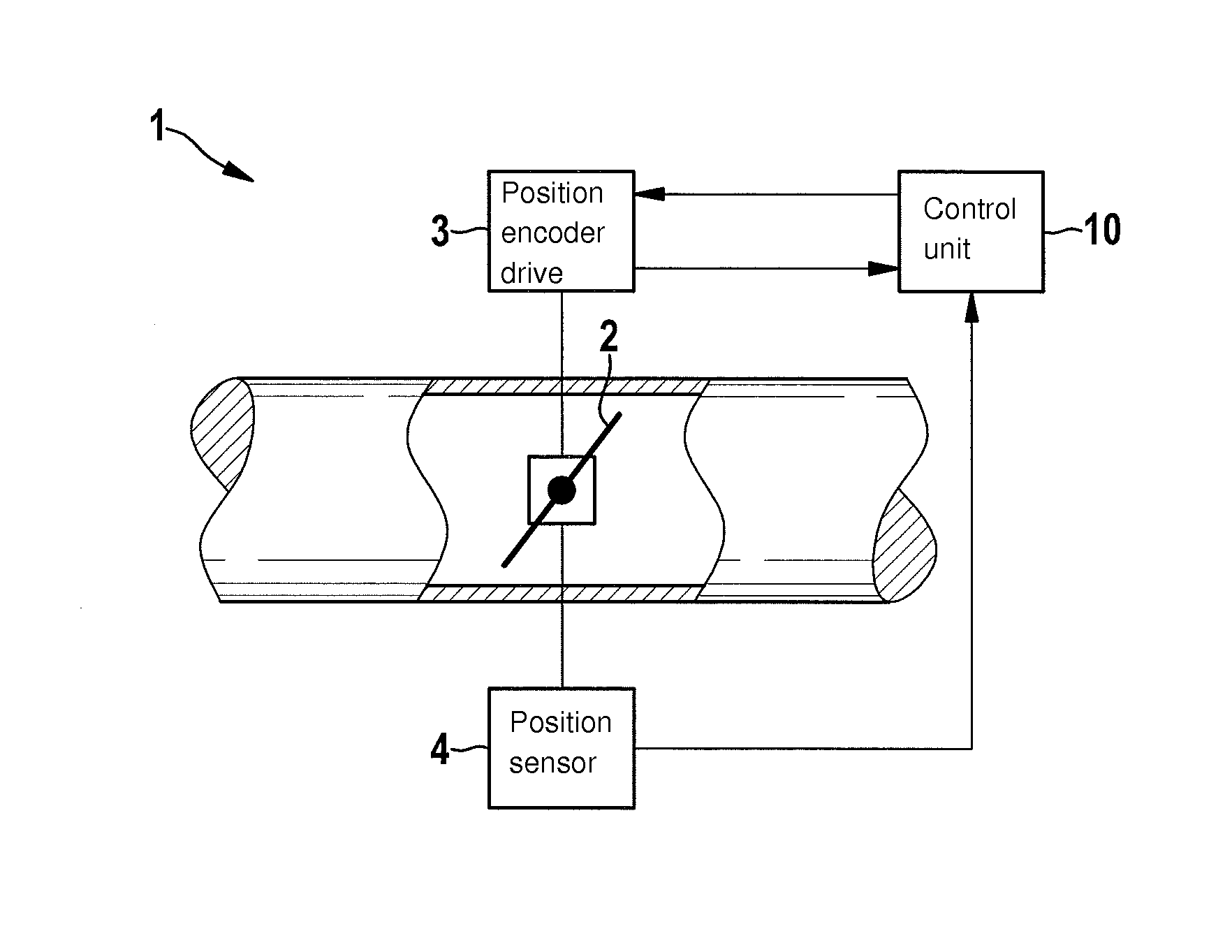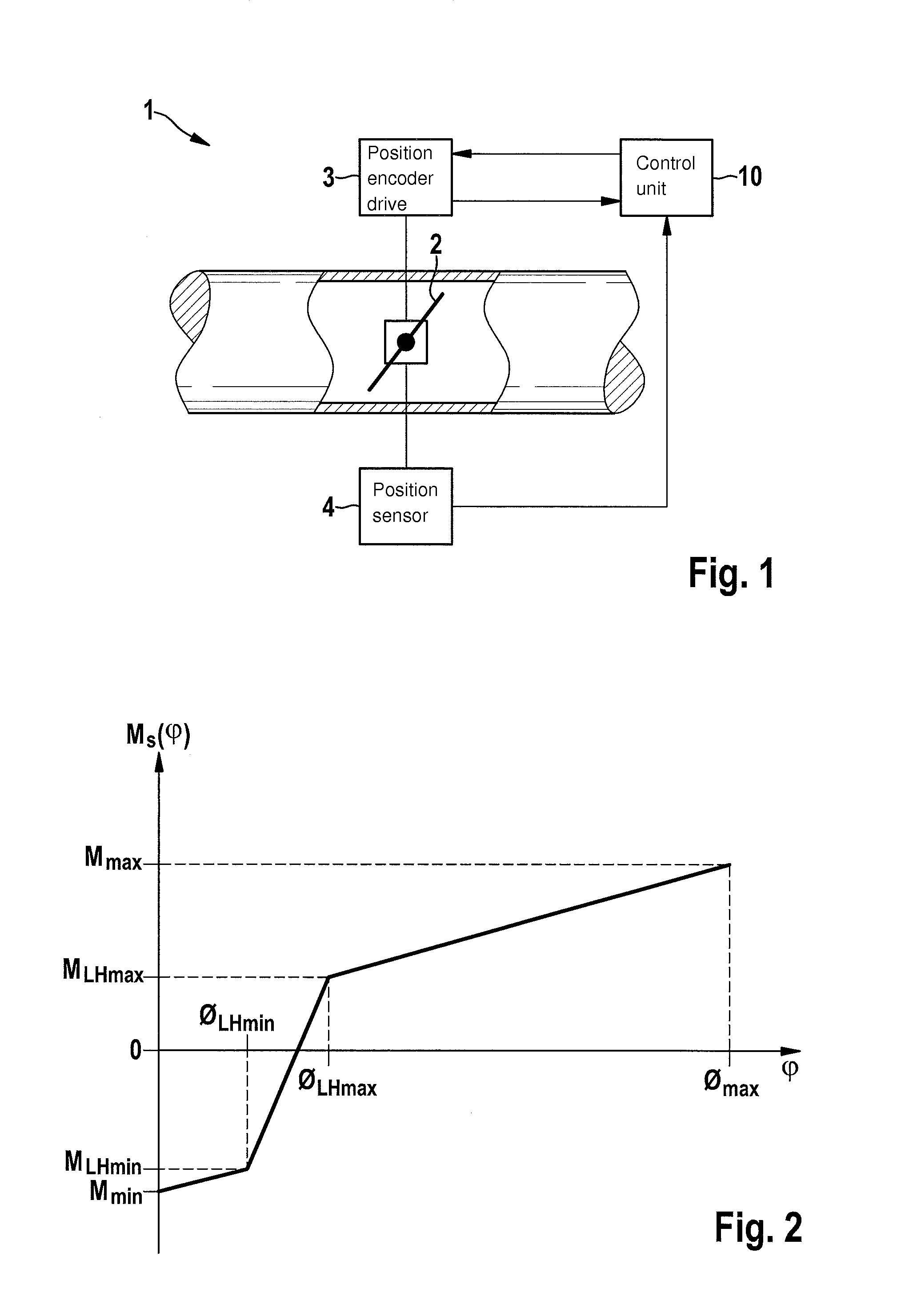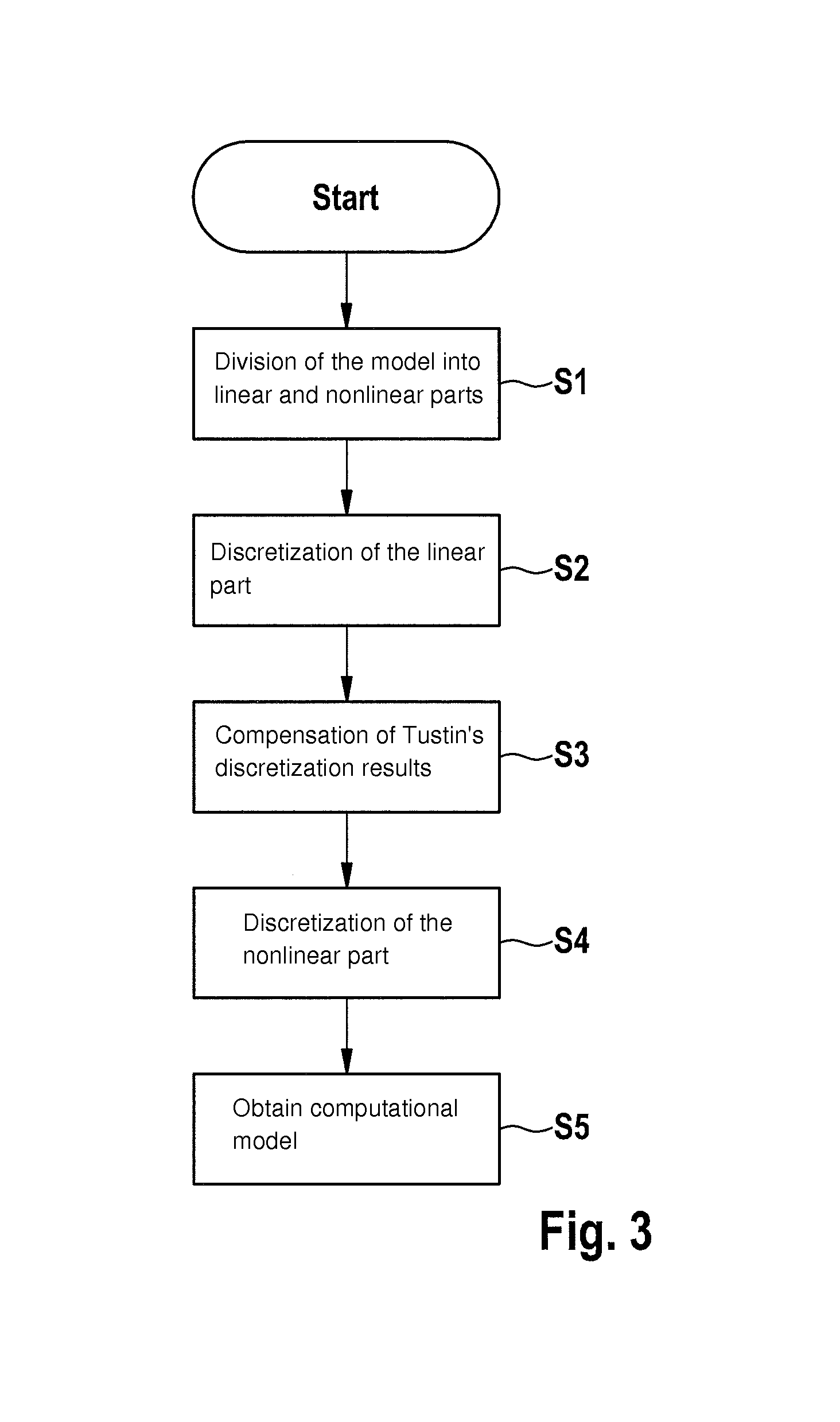Method and device for creating computational models for nonlinear models of position encoders
- Summary
- Abstract
- Description
- Claims
- Application Information
AI Technical Summary
Benefits of technology
Problems solved by technology
Method used
Image
Examples
Embodiment Construction
[0036]FIG. 1 shows a position encoder system 1 for adjusting the position of an actuator 2. This method for creating a computational model which maps the physical model of position encoder system 1 as accurately as possible and makes it suitable for use in a control unit having a limited computing capacity, for example, is described below on the basis of a throttle valve position encoder, which is able to adjust a throttle valve as actuator 2. However, it is also possible to apply the method described below to other position encoder systems whose physical behavior is describable by nonlinear differential equations.
[0037]Actuator 2 is moved with the aid of a position encoder drive 3. Position encoder drive 3 may be designed as an electromechanical actuator, which may be designed, for example, as a dc motor, as an electronically commutated motor or as a stepping motor. With the aid of a position sensor 4, the position actually assumed by actuator 2 may be detected and analyzed.
[0038]P...
PUM
 Login to View More
Login to View More Abstract
Description
Claims
Application Information
 Login to View More
Login to View More - R&D
- Intellectual Property
- Life Sciences
- Materials
- Tech Scout
- Unparalleled Data Quality
- Higher Quality Content
- 60% Fewer Hallucinations
Browse by: Latest US Patents, China's latest patents, Technical Efficacy Thesaurus, Application Domain, Technology Topic, Popular Technical Reports.
© 2025 PatSnap. All rights reserved.Legal|Privacy policy|Modern Slavery Act Transparency Statement|Sitemap|About US| Contact US: help@patsnap.com



